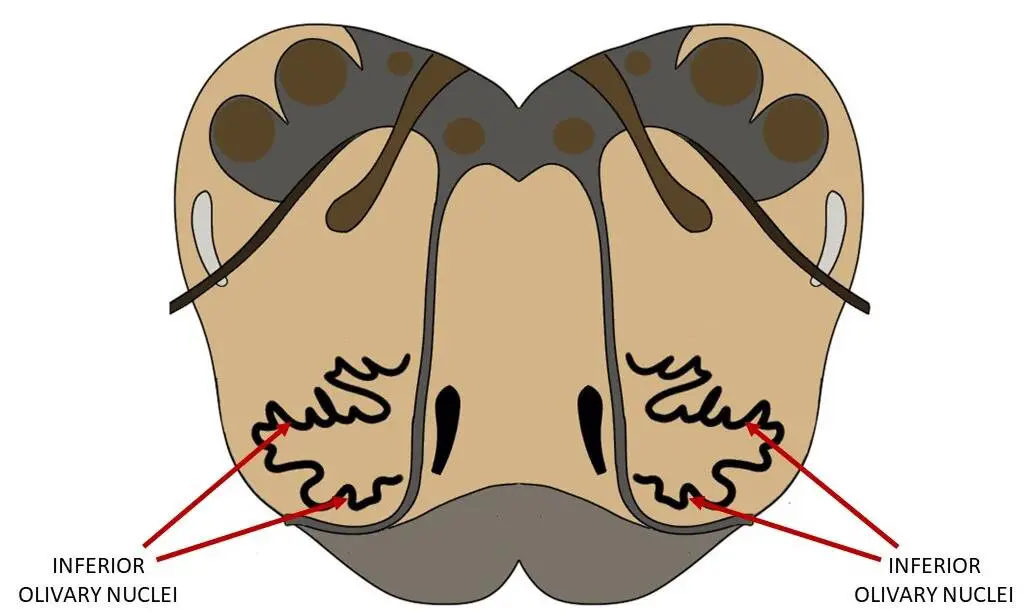Know Your Brain: Olivary Nuclei
Where are the olivary nuclei?
The olivary nuclei, which consist of the inferior olivary nucleus and superior olivary nucleus, are found in brainstem. The olivary nuclei are paired structures, with one inferior and one superior olivary nucleus on each side of the brainstem. The inferior olivary nuclei are located in the medulla oblongata, and the superior olivary nuclei are found in the pons. Both nuclei are typically subdivided into collections of smaller nuclei.
What are the olivary nuclei and what do they do?

The inferior and superior olivary nuclei are distinct in function. The inferior olivary nucleus is typically subdivided into the principal olive, medial accessory olive, and dorsal accessary olive, and is thought to play an important role in movement, coordination, and movement-related learning. The superior olivary nucleus consists of the lateral superior olive and medial superior olive, as well as a number of surrounding nuclei known as the periolivary nuclei. The superior olivary nuclei are thought to be involved in hearing, and specifically with identifying the location of sounds.
The inferior olivary nuclei receive movement-related information from several sources, including the spinal cord and motor cortex. This includes information about current movement, body position, muscle tension, and intention. The inferior olivary nuclei use this information to communicate with the cerebellum to fine-tune movements and aid in movement-related learning.

The superior olivary nuclei receive projections from the cochlear nuclei that carry information about hearing. Neurons leave the superior olivary nuclei to extend to the inferior colliculus, which is an important part of the auditory system. The superior olivary nuclei receive information from both ears, and that information is compared to detect differences in qualities like intensity and to determine the location of a sound in the environment. The information is then sent to the inferior colliculus and processed further before being sent on to other regions like the thalamus and cerebral cortex. Additionally, neurons in the superior olivary nuclei project back to the cochlear nuclei. These projections are thought to be involved in negative feedback mechanisms that help to inhibit auditory stimuli that are deemed less important, such as background conversations.
References:
Paul MS, M Das J. Neuroanatomy, Superior and Inferior Olivary Nucleus (Superior and Inferior Olivary Complex) [Updated 2020 Jul 31]. In: StatPearls [Internet]. Treasure Island (FL): StatPearls Publishing; 2021 Jan-. Available from: https://www.ncbi.nlm.nih.gov/b...
Schweighofer N, Lang EJ, Kawato M. Role of the olivo-cerebellar complex in motor learning and control. Front Neural Circuits. 2013 May 28;7:94. doi: 10.3389/fncir.2013.00094. PMID: 23754983; PMCID: PMC3664774.


